We live in a medical crisis.
Bacteria become resistant to antibiotics.
Cancer spreads like never before.
And a virus determines how we live our lives.
Why do we need to transport drugs within our bodies?
These three major problems need researchers to develop new drugs, like new antibiotics, efficient chemotherapeutics, or long-lasting vaccines.
But we also need to transport these drugs into our bodies and to a specific location. This could be the site of a bacterial infection or the tumor that we’re trying to kill.
For this, researchers have been working on new delivery methods to transport drugs to a specific site. And, interestingly, many of these methods are based on bacterial mechanisms. So, we felt it was more than worth discussing some of these mechanisms here with you. This will show you another way of how bacteria can save this planet by transporting drugs within our bodies.
Let’s dig in.
Outer membrane vesicles
In Bacteria firing toxic bubbles, we learned that Gram-negative bacteria can form bubbles of their outer membranes. These bubbles are called outer membrane vesicles and they can be filled with stuff.
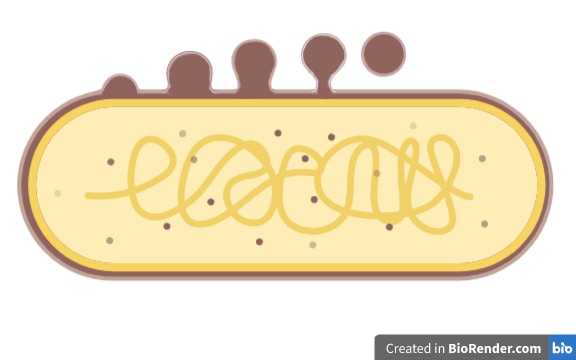
And researchers also tried to use these bubbles to deliver drugs.
Luckily, our immune system can recognise and respond to outer membrane vesicles. This means our bodies can produce antibodies against the surface of these outer membrane vesicles.
Outer membrane vesicles carrying stuff on their surface
For example, researchers made the bacterium Escherichia coli produce outer membrane vesicles. Only the lipids of the vesicles – nothing else. They then gave these outer membrane vesicles to mice. These outer membrane vesicles were not dangerous and the mice did not produce antibodies against them.
Then the researchers engineered the vesicles. Between the lipids, the vesicles now carried proteins from the pathogenic bacterium Acinetobacter baumanni. Hence, the protein becomes a so-called antigen. This means, that the mice produced antibodies against the antigen. This made them immune against an Acinetobacter baumanni infection.
This is an option of how to transport antigens into our body to make us immune against different pathogens.
Outer membrane vesicle bubbles filled with stuff
Another way of using bubbles from bacteria to transport drugs is by filling them with stuff.
For this, the outer membrane vesicle carries a specific protein. This protein fits like a key to a lock of a certain cell type. Like this, the outer membrane vesicle can dock onto a specific human cell and interact with it.
Just as you can see in the picture above how outer membrane vesicles are formed, this mechanism can also work the other way around. An outer membrane vesicle can “melt” into a human cell. Then, the content of the outer membrane vesicle flows into the human cell.
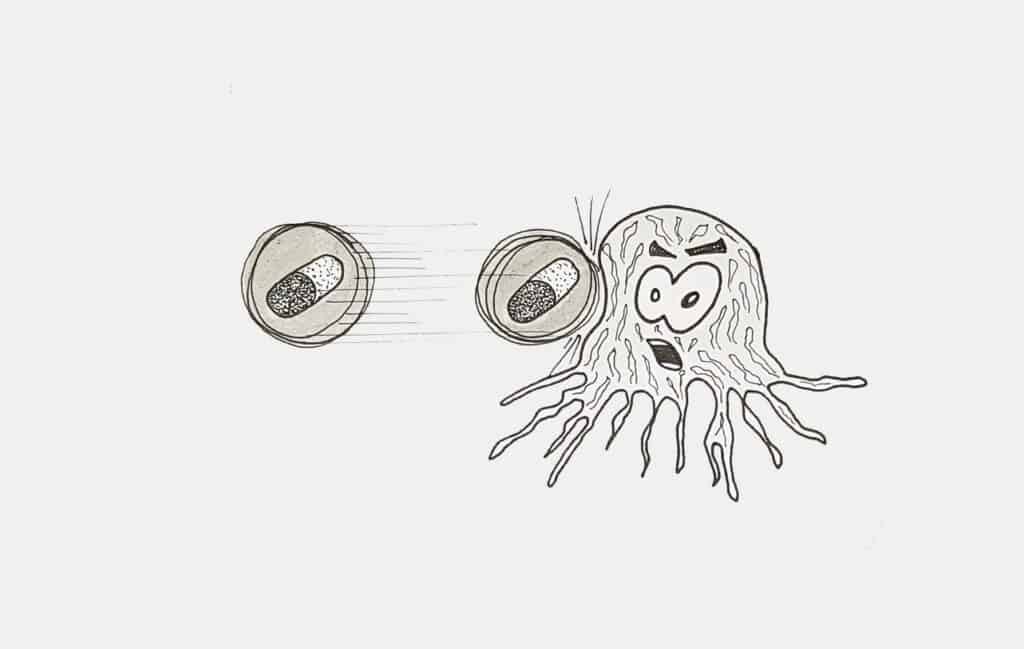
For example, researchers engineered outer membrane vesicles and filled them with a chemotherapeutic. This outer membrane vesicle then specifically melted with cancer cells and shed their content into these. This did not completely kill the tumour but inhibited its growth.
Researchers also developed new vaccines that have DNA or RNA inside these lipid membranes. Read more about vaccines made by bacteria.
As exciting as this mechanism sounds at the moment, it still requires more research to fully understand how we could use outer membrane vesicles as drug-delivering vehicles.
Magnetosomes – bubbles following a magnetic force
Magnetosomes are similar to outer membrane vesicles, as they are bubbles made of a lipid membrane. But in How bacteria read and follow the Earth’s magnetic field, we learned that magnetosomes also have iron-clusters that make them magnetic.

Researchers have the idea to guide magnetosomes with a magnet to a specific location in our bodies. Like this, magnetosomes can go deep into tumour tissue and work their magic there.
Now, similarly to outer membrane vesicles, magnetosomes can be filled with drugs like antibiotics or chemotherapeutics. These drugs are then shed into tumour cells or into the surrounding of tumour cells.
So far, researchers showed this method in mice. They filled magnetosomes with a vaccine against a tumour, gave them to the mice and held a magnet right next to the tumour. This treatment protected the mice from the tumour and could be used at some point in the clinic.
Bacterial ghosts – a shell of a dead bacterium
Ghosts of bacteria in your body? That is certainly a science fiction idea.
For this, researchers grow bacteria in the lab and engineer them to produce a protein of interest. This could be for example an antigen that will trigger an immune response in the human body.
When the bacteria are fully grown, researchers trigger them to produce massive tunnels in their outer membrane. All the content of the bacterial cell will flow out into the surrounding. This means, the bacterium itself is dead and cannot grow anymore. But the bacterial envelope with the antigen is still stable.
Studies showed that bacterial ghosts with antigens triggered antibody production in rabbits.
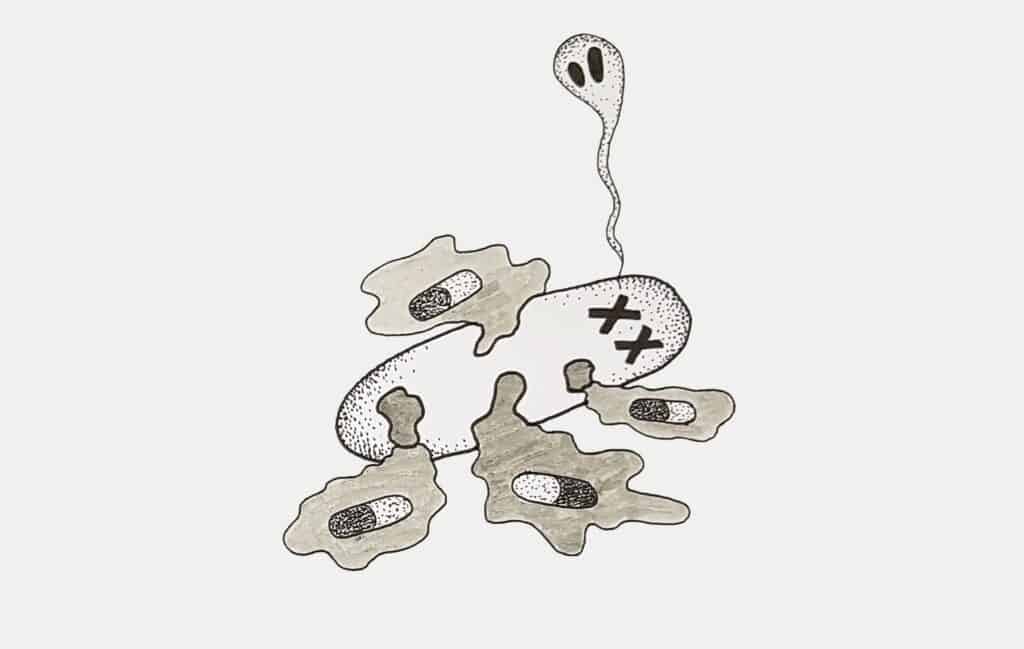
In another study, researchers filled the bacterial ghosts with anti-cancer drugs. Fortunately, the bacterial ghosts release the drugs very slowly. Like this, the drug is administered over a long time and is thus more efficient. However, researchers did these basic experiments only on cell lines so far. Hence, a lot more research is required to better understand this mechanism of drug delivery.
Living bacteria to transport drugs
Transporting drugs in the body using living bacteria sounds pretty challenging. But researchers know how to engineer strains that have no damaging effects on our bodies and our immune system.
Using living bacteria to transport drugs in the body even has many advantages.
Bacteria are attracted by certain chemicals
Bacteria do chemotaxis which means they are attracted by certain chemicals or molecules.
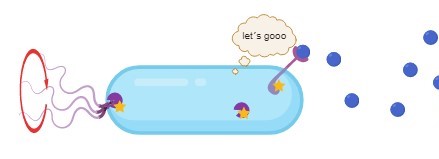
For example, some bacteria are attracted by areas with low or no oxygen at all. Cancer tissue generally lacks oxygen and the surrounding tissue has very low oxygen concentrations.
Hence, some bacteria are already directly attracted by tumours or cancer tissue.
Also, researchers are trying to engineer bacteria that are attracted to other chemicals. For example, they improve chemotaxis in some bacterial strains. And now these bacteria are more efficient in recognising certain molecules within tumour tissue.
Bacteria move with their flagella
After being attracted by a certain molecule, bacteria actively swim towards this molecule. For this, they use their flagella and pili.
Hence, this swimming behaviour brings them efficiently to the site of infection.
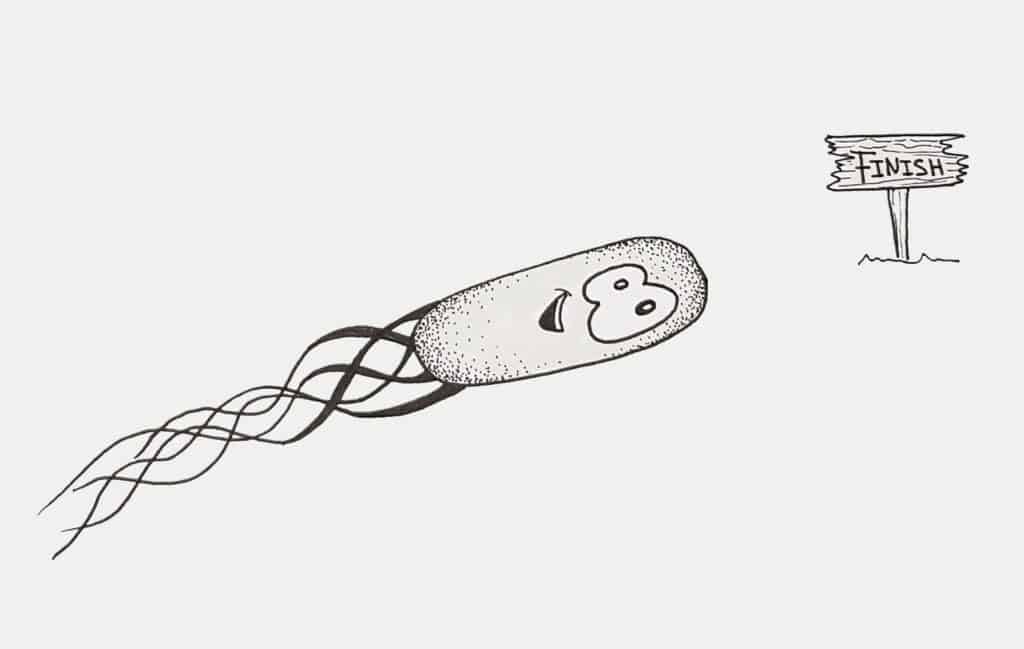
Bacteria produce drugs on the spot
Bacteria are drug production machines.
Generally, researchers engineer bacteria in a way that they start producing drugs only when they reach a specific location.
Like this, bacteria produce the right drug at the right time and the right location.
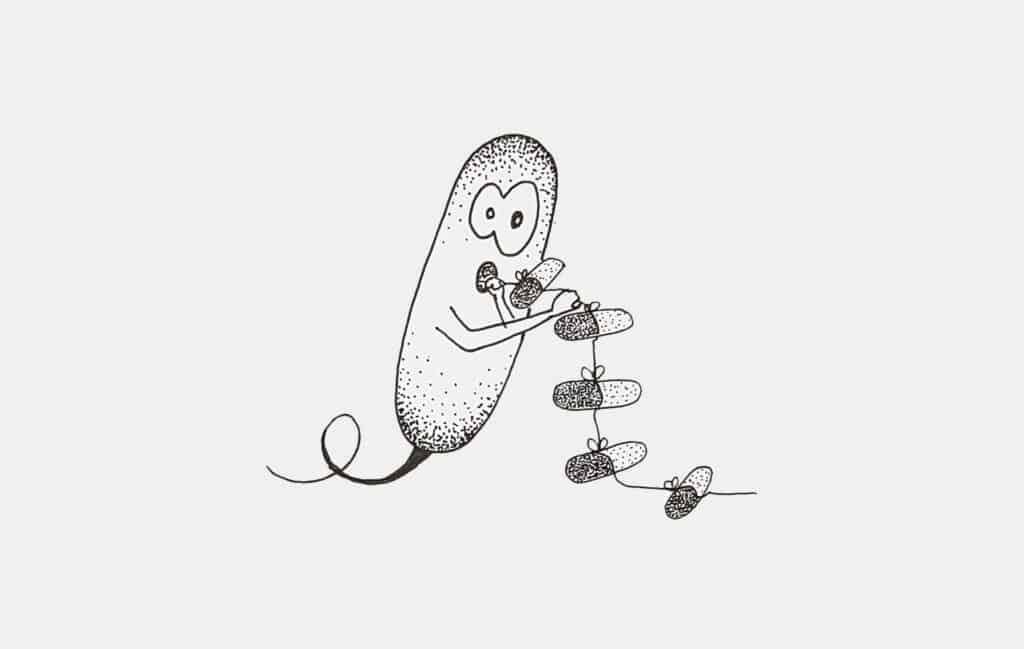
And they can even produce multiple different drugs. How efficient!
Bacterial hybrid delivery systems – Microbots as the future?
Using a hybrid system between an engineered bacterium and a non-living unit sounds a lot like science fiction. These systems are even called microbots or bactobots. But also here, they have only been tested in the lab, and no studies on humans were done yet (at least to my knowledge!).
A microbot consists of a bacterium that does chemotaxis. So, they could be attracted to tumours or cancer tissue.
And this bacterium carries a nanoparticle that is filled with a drug. Like this, the bacterium steers the particle, and thus the drug, to the place of infection. Here, it can release the nanoparticle, which can now work its magic.
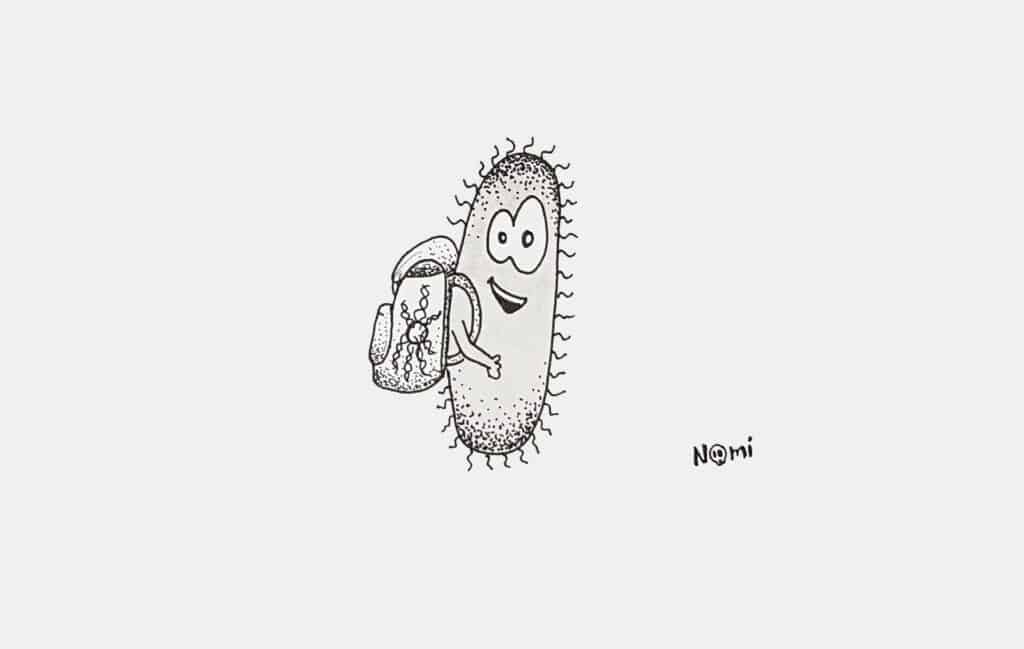
So far, researchers showed in a preliminary study in mice, that bacteria can successfully deliver nanoparticles covered with DNA into specific organs.
However, there are still so many obstacles to consider. But it certainly sounds like a promising and very efficient science-fiction idea.
Bacteria and their organelles can transport drugs within our bodies
Here, I showed you some ideas of how researchers are trying to use bacteria or their organelles to transport drugs within our bodies.
We looked at “bacterial organs” like outer membrane vesicles or magnetosomes. These could carry drugs and deliver them to certain body tissue.
We then discussed how researchers are trying to better understand bacterial ghosts to use them as drug vehicles.
And we explored living bacteria and why researchers think they can use them to transport drugs within our bodies.
Microbots, however, sound like science fiction so far. But, who knows, maybe at some point, we will eat a bacterium that carries a nanoparticle filled with drugs.
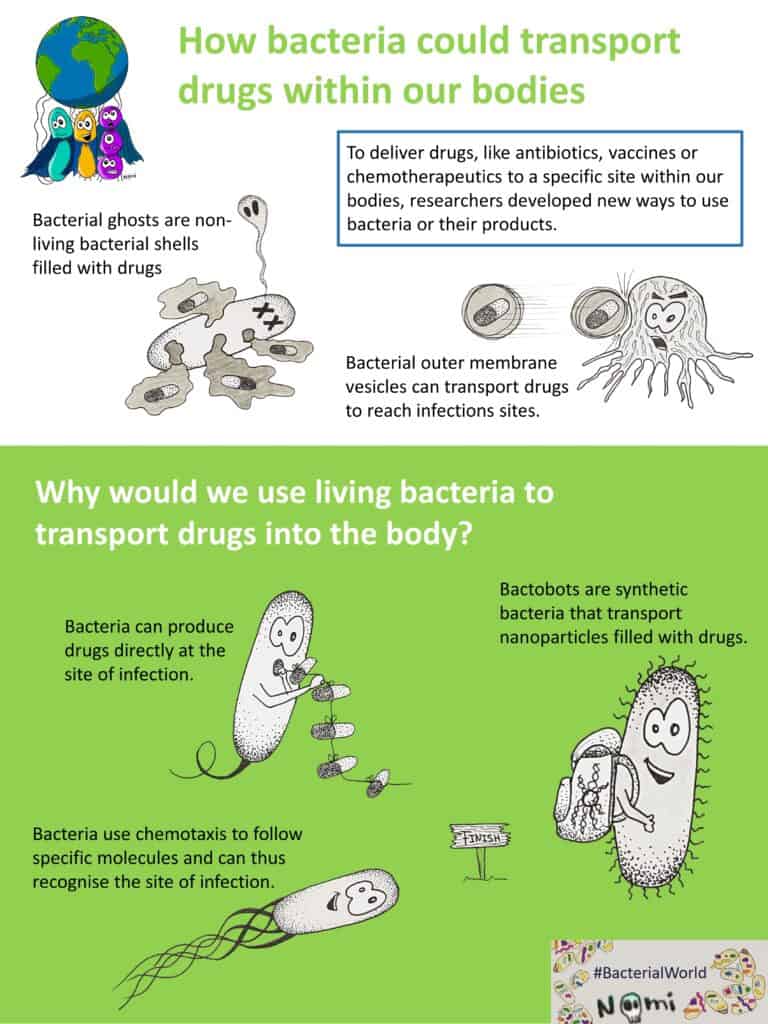
I hope we could yet again show you a fantastic way of how bacteria can save our medical problems and thus our planet. So, now is the time to lose the fear of bacteria and believe in them.
Together with bacteria, we can save this planet.

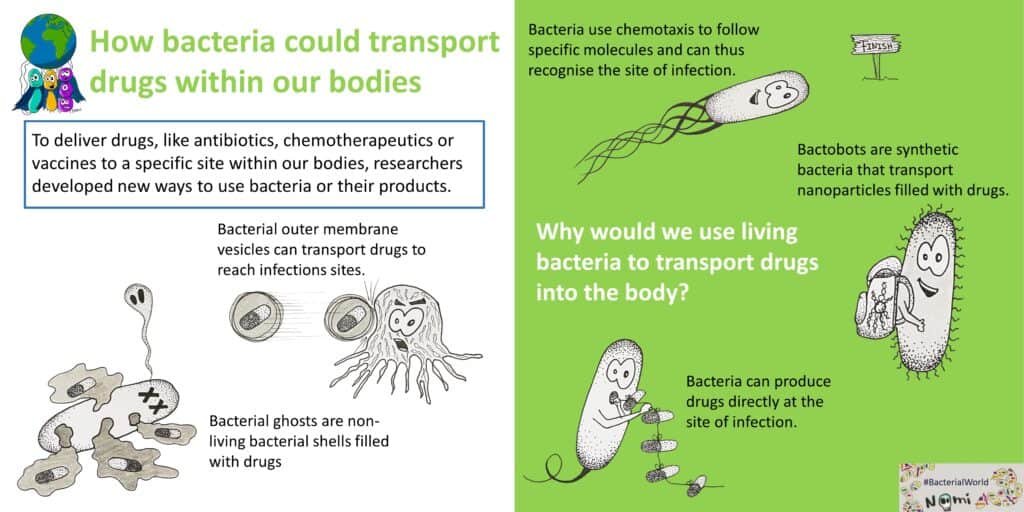
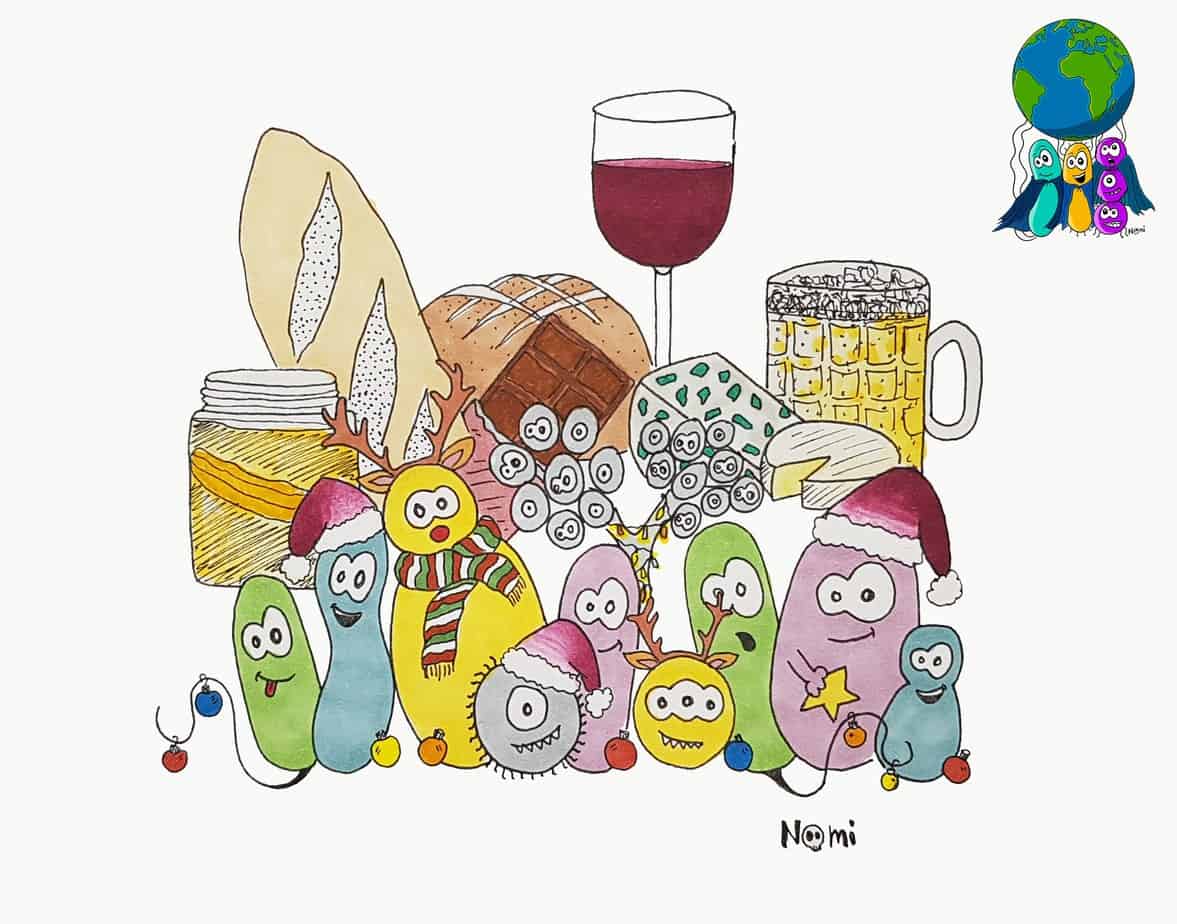
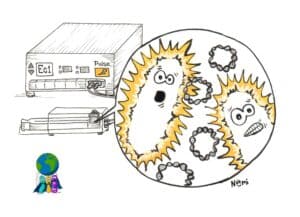
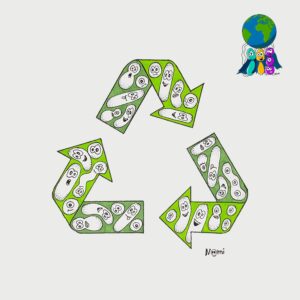
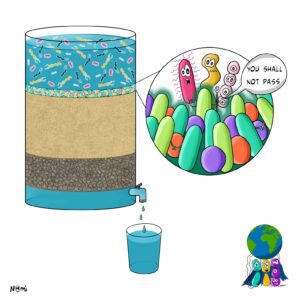
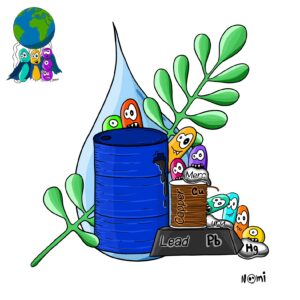
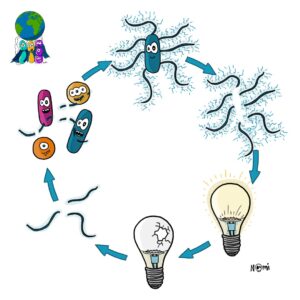
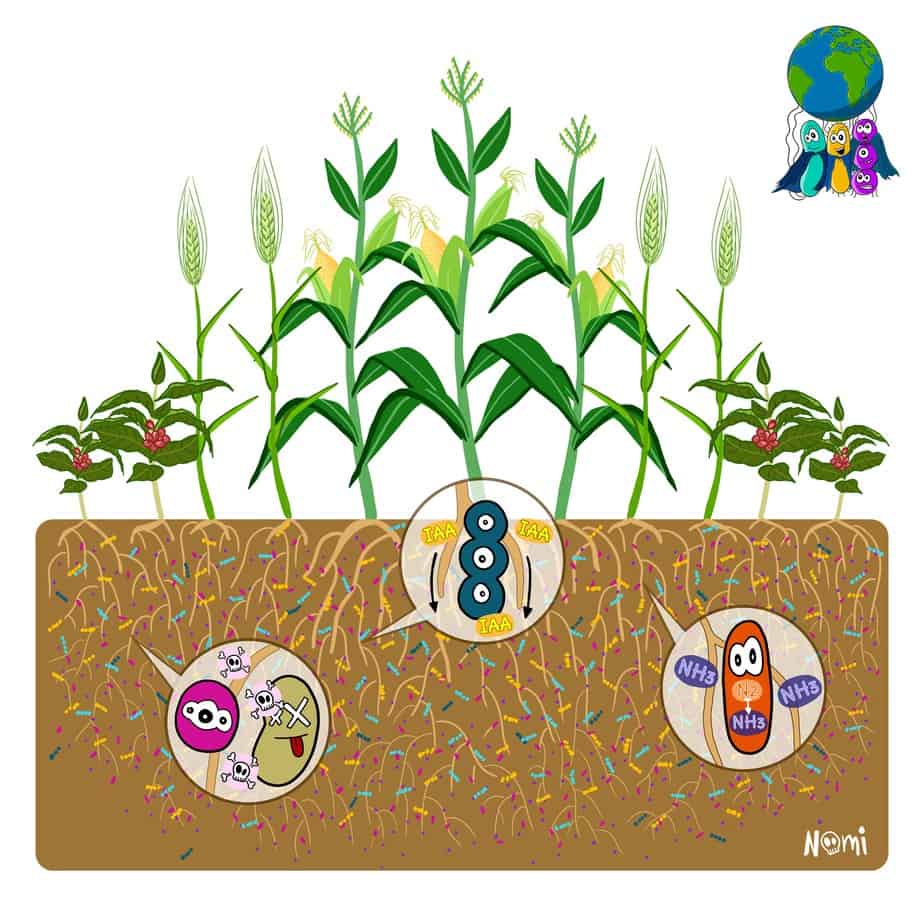
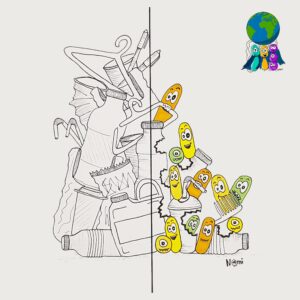
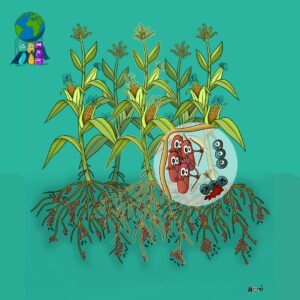

2 Responses
Your content is very interesting and enriching. It contains the future hope of well being of human and animals. Keep on doing.
Thank you. Glad you think it can help.